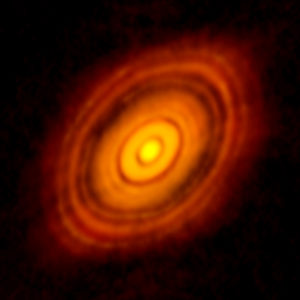ALMA Observatory
San Pedro de Atacama, Antofagasta, Chile

The Atacama Large Millimeter Submillimeter Array (ALMA) is a forefront astronomy facility in Northern Chile focused on exploring the darkest, coldest, most distant regions of space to develop a deeper understanding of the origins of our Universe. ALMA is at an altitude of 5,050 meters and consists of an 11-mile-wide interferometric imaging array of fifty-four 12-meter dish antennas and a compact array of twelve 7-meter antennas.
AUI proposed the creation of ALMA and led efforts in the design, construction, management and operation of the resulting facilities. AUI maintains offices in Chile and the United States dedicated to our continued support and management.
Discoveries

ALMA began early science operations in September 2011 and has led to several important discoveries including the first detailed images of a planet-forming disc around the young star HL Tau.
ALMA also played a significant role through the Event Horizon Telescope Project on the creation of the first images of a supermassive black hole and its shadow. ALMA explores the Universe in millimeter and submillimeter-wavelengths with unprecedented sensitivity, resolution and imaging capability. In cooperation with the Republic of Chile, ALMA is a major international partnership between North America, Europe and East Asia.
Explore more of ALMA’s discoveries in News.
